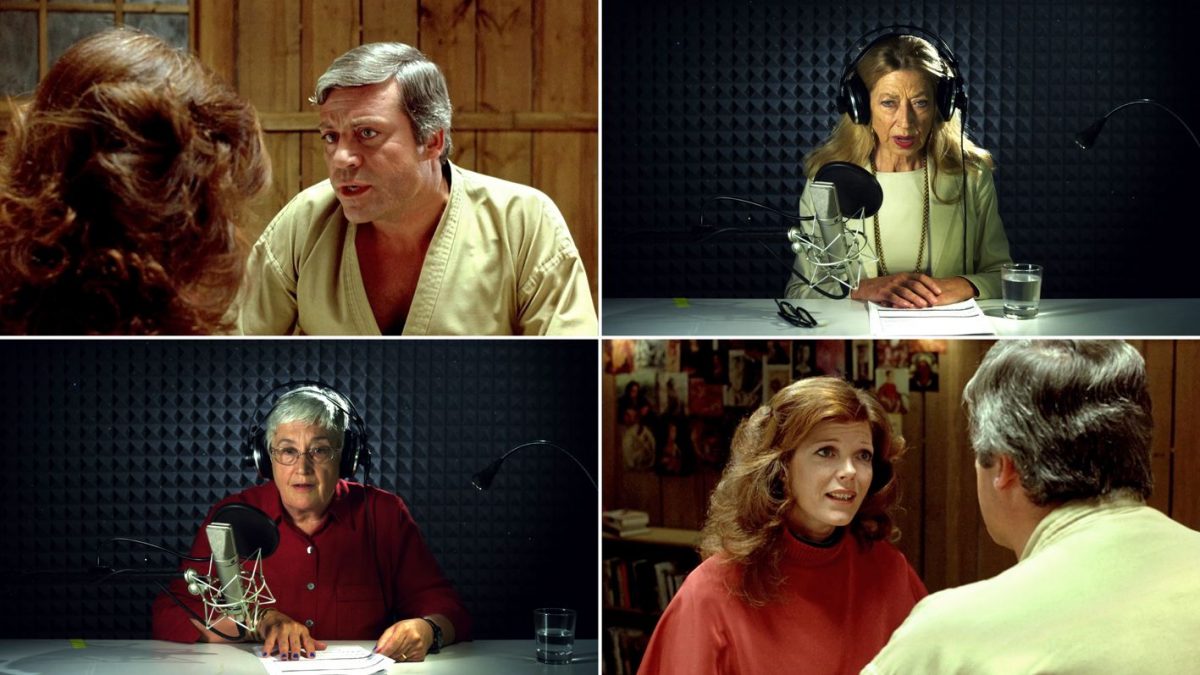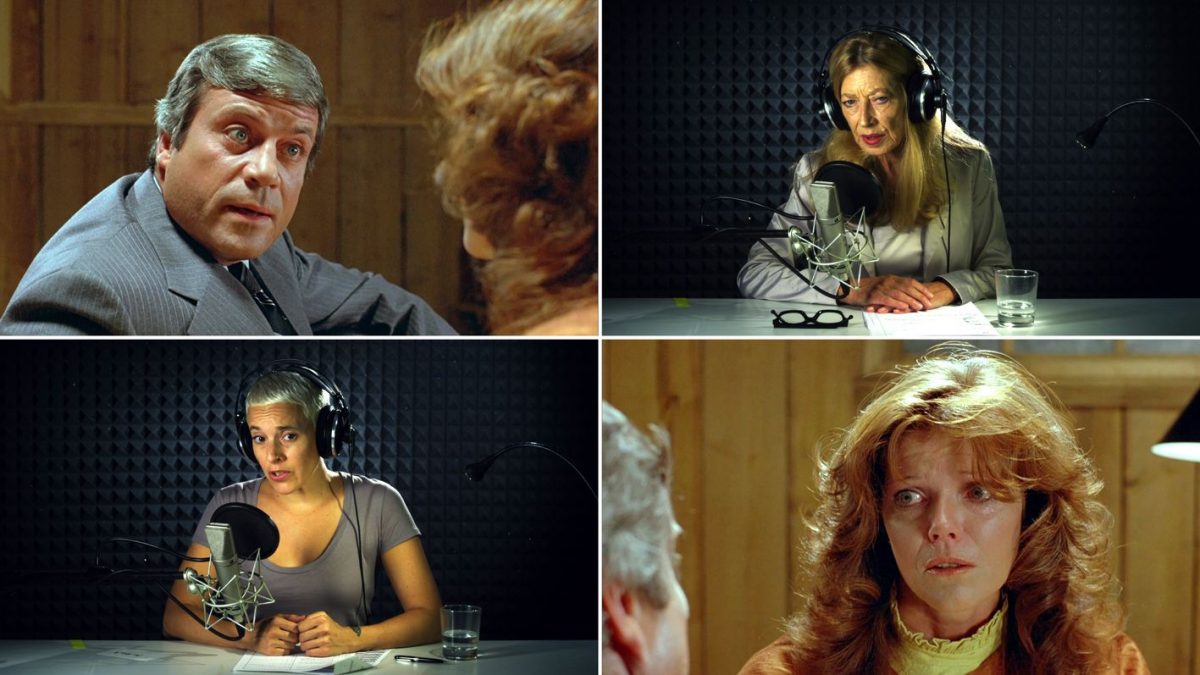
- This event has passed.
I do think an artist and a psychoanalyst do the same thing, in a way. They’re presented with an official version of reality, and then they say, ‘Okay, but what’s underneath that? What are the hidden factors driving it?’ We’re both fascinated by the human condition in general – we want to know what’s really going on.
Treatment, a new dual-channel installation by Candice Breitz, brings an original soundtrack to three key scenes from The Brood (1979), a film that David Cronenberg has often described as his version of Robert Benton’s Kramer vs. Kramer (also released in 1979). The Brood’s heavily autobiographical script explores the emotional and psychological strain experienced by a couple as their marriage dissolves, and a custody battle for their five-year-old daughter Candice Carveth ensues. Himself fighting for custody of a young daughter at the time of writing The Brood, Cronenberg has admitted that Samantha Eggar—the actress cast as Nola Carveth—“looked a little like my ex-wife,” while Art Hindle (the actor chosen to play her husband, Frank Carveth), in the director’s opinion, looked somewhat like himself. Having created—in the plot of The Brood—“a reasonable movie facsimile” of the harrowing situation he was facing in his own family life at the time, Cronenberg Brood’s—throughout much of the unfolding narrative of the film—on a series of dysfunctional parent-child relationships, observing the havoc that these wreak across three generations of the Carveth family.
In a state of emotional distress following the collapse of her marriage, young Candice’s mother Nola Carveth effectively spends the film in treatment. Held in limbo in a fortressed clinic under the supervision of renegade psychotherapist Dr Hal Raglan (played by Oliver Reed), Nola is both the daughter of an abusive mother and the mother of a daughter that she abuses, embodying Cronenberg’s interest in the self-perpetuating psychological horror that lies potential in family relationships:
The Brood is the most classic horror film I’ve done: the circular structure, generation unto generation; the idea that you think it’s over and then suddenly you realise that it’s just starting again. That’s classic horror-movie structure.
Dr Raglan’s experimental techniques require patients to re-enact family relationships as a means of working through their trauma. His treatment involves intensive bouts of therapeutic role-play during which the doctor typically plays his patients’ abusive parents or maltreated children. As the matrix for her dual-channel projection Treatment, Breitz isolates three such scenes from The Brood. Each of the scenes—now severed from the plot of the original film— invites us to voyeuristically observe a therapeutic exchange between Dr Raglan and one of his patients. Collectively, the scenes conjure up a series of scenarios—between father and son, between mother and daughter, between father and daughter—that are the stuff of family nightmares. A series of transferences and cross-transferences come into play across the three sessions as Raglan shifts nimbly in role from father to mother to daughter, while his patients accordingly oscillate between child and adult versions of themselves.
In removing these vignettes portraying therapeutic sessions from their service to the plot of The Brood, Treatment allows them to exist independently of the film’s fictional narrative, such that the potential horror lurking within family psychology now resonates as their primary subject.
In Breitz’s installation, the three scenes are projected one after the next on a gallery wall, in a constant rotation that evokes the looping repetition that is endemic to inner life. The scenes are stripped silent of the film’s original soundtrack, instead receiving their vocal content from the soundtrack of a second projection of the same size, which mirrors the original footage on the opposite wall of the gallery, making simultaneous viewing of both projections impossible. To watch either, one must turn one’s back on the other. In compensation, Breitz’s freshly recorded soundtrack does double duty, making Siamese twins of the two projections as it binds them to one another aurally, giving voice to both. The second projection consists of a sparse visual documentation of the making of the soundtrack: set in a professional sound studio, the footage cuts between four individuals, each seated at a microphone, each labouring to project his/her voice convincingly into the body of one of the actors appearing in the original scenes projected on the opposite wall.
The credits of the work reveal the identities of the dubbing team: the artist invited her de facto psychotherapist Dr Renate Becker to synchronise the voice of Dr Raglan across all three scenes, while the voices of the three patients undergoing treatment are painstakingly recreated by the artist’s mother, father and the artist herself. The move is consistent with Cronenberg’s view of cinema as a space in which to “rehearse the difficult things of life,” and points strongly to Breitz and Cronenberg’s shared interest in the overlap between cinematic- and psychological analysis. In asking her parents and therapist to vocally re-articulate the domineering Dr Raglan and his long-suffering patients, Breitz literally loops Cronenberg’s cinematic analysis of the psychological wounds that parents inflict on their children through her own mother and father, bringing full circle a fictionalised study of trauma that originally grew out of Cronenberg’s processing of his own family horror story.
As with Cronenberg’s Brood, Breitz’s Treatment resists indulging concrete autobiographical information, denying onlookers voyeuristic access to her actual relationships with her parents and therapist. Treatment instead directs our thoughts to the circular nature of the relationship between real life and reel life; the ability of film to give voice to the stuff of life in the guise of fiction, but also the alchemy via which cinematic fiction in turn becomes ‘real’ for its viewers as it vocalises their actual or imagined experience.
In focusing on the family trauma at the heart of The Brood, Breitz pays tribute to Cronenberg’s ability to draw audiences into psychological identification with his characters, suggestively adding the voices of her own family to a palimpsest that already folds Cronenberg’s family narrative into that of the fictional Carveth family. Staging an analogy between cinematic role-play and therapeutic role-play, The Brood and Treatment share—with their directors—a deep-seated interest in the formative nature of family relationships, a serious investment in the analytical potential of the moving image, and an absolute conviction in the potential of fiction to delve beneath the surface of things.



